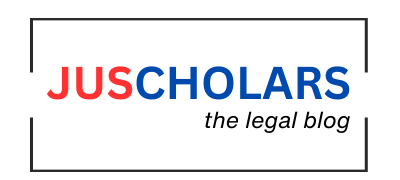The fashion industry stands at a pivotal point in current era of advance globalization. Theres been an increasing demand of consumers seeking clothing production based on sustainable ethical standards. The combined rise of environmental worry and labor right understanding has driven consumers to change their buying habits thus motivating brands to change their manufacturing processes.
Health and longevity matter more than trends in contemporary fashion because consumers now measure outfits based on their impact on the environment and their ethical production methods as well as their sustainability standards. The fashion industry now includes many brands which support business approaches to minimize waste alongside using sustainable materials and to guarantee employee rights throughout supply chain operations.
Real sustainability in fashion remains complicated because it faces various substantial difficulties. The fast fashion approach followed by the industry has caused major environmental problems through excessive waste generation along with pollution emissions and excessive carbon emissions. The ethical standards in fashion face substantial challenges because of continuing issues involving substandard work environments as well as worker mistreatment that exists in developing nations.
Sustainable transformation of the fashion industry requires it to implement green production methods and disclose all supply chain operations and hold consumers accountable for responsible practices. Every aspect of the industry needs innovation including substance production along with manufacturing techniques and policies that guide consumer actions and lawmaking bodies.
The goal of attaining sustainable practices demands both internal brand development and external partnerships with governments and NGOs and consumers. All fashion industry stakeholders can use collaboration to establish a balance between style with responsibility which will develop an ethical and environmentally-conscious fashion system.
Understanding Sustainability in Fashion
Fashion sustainability in the industry involves extensive methods beyond green materials because it establishes complete frameworks focused on product generation safety for nature, worker welfare, and responsible buying practices. Traditional fast fashion exists through continuous cheap garment productionwhich requires fast manufacturing cyclesensuring constant product delivery. The production approach paves way to environmental effectsinvolving waste accumulation,water consumption reduction and high carbon dioxide emissions. The fashion industry rates among the world’s largest polluters, which generates substantial effects toward climate change.
The sustainable fashion practice demands immediate attention to yearly waste production because it remains one of its critical issues. An estimated number of millions of tons of clothing has annual disposal rates, with the majority of discarded items ending up in municipal dumps, where they require hundreds of years for decomposition. The waste problem intensifies because of the fast fashion model’s excessive consumption pattern that leads consumers to buy rapidly and throw items away quickly after minimal use.
The fashion industry now experiences its most critical point because consumers increasingly require sustainable practices to appear throughout fashion production processes. The transformed consumer awareness depicts how society is becoming more environmentally conscious, thereby driving labels to adopt sustainable business practices. The path toward genuine sustainability faces many complex barriers before true success can be achieved. Sustainability and ethical norms can incorporate the fashion industry through three vital elements, including production sustainability assessment and labour rights protection, alongside the implementation of modern sustainable techniques.
The COVID-19 pandemic clearly exposed problems when fast fashion companies dismissed their orders while refusing payments, resulting in workers losing their source of income. The inadequate protection of worker income throughout the pandemic revealed how little care the fashion industry shows toward its labor practices. The situation demanded drastic changes to become more urgent due to this development. Many fashion brands established ethical certification programs to prove their products originated from fair working environment conditions.
The enforcement systems of ethical certifications remain insufficient, and the available data is inadequate to confirm whether brands hold genuine ethical standards through their certifications.Fashion companies should abandon superficial certifications because absolute labor practice improvement requires committed action to deliver fair wages and safe workplaces alongside unionization rights for staff. Any brand that wants to lead in sustainability among others must demonstrate its commitment to ethical labor practices.
Innovations in Sustainable Fashion
Multiple innovations prove promising for developing sustainable features in the fashion industry, despite its major obstacles. The combination of technological innovation and design versatility has produced methods to decrease environmental damage that the fashion industry creates. The rising rejection of conventional synthetic textile products from fossil fuels has led to public interest in organic cotton, together with hemp and bamboo materials.
The organic natural fibres show better degradation properties, in addition to requiring smaller environmental resources compared to typical materials. Engineering designers focus on sustainable materials and recycled fabrics, including recycled polyester, because such textiles minimize waste and reduce resource requirements.
The Khadi movement which took place in India demonstrates excellent application of combining traditional methods with sustainable practices. The handmade fabric known as Khadi gets its production value from environmentally friendly fermentation and maintains local employment for rural artisans. Humanitarian initiatives through this movement achieve two-fold benefits by defending both natural fibres and protecting traditional skills while growing social agendas.
The fashion industry continues to evolve because of how technology enhances its operations. The fashion industry underwent a revolution through the implementation of 3D printing alongside digital design tools alongside on-demand manufacturing systems. Technical innovations create the ability for brands to make limited batch productions without producing excess stock. Through the integration of technology, brands can lower operational environmental effects while benefiting from tools that streamline their inventory management and design optimization processes.
The sustainable fashion movement benefits from the rising popularity of rental and resale platforms. The Indian market has witnessed a growing popularity of rental services and secondary marketplace platforms, including Rentomojo and second-hand retail sites OLX and Quikr, for pre-owned clothing acquisition. Such services allow garments to exist longer, which decreases new manufacturing requirements and contributes to waste reduction efforts.
Bridging Gaps and Way Forward
- Different barriers persist to limit the general adoption of sustainable, ethical, and environmentally friendly fashion practices in spite of current progress.
- Continued fast fashion growth: Fast fashion’s unceasing pattern of manufacturing and then selling goods challenges the initiatives that aim to lower waste along with environmental toxicity.
- Deficiency of Standard Metrics: The difficulty in evaluating brand sustainability efforts increases because of absent standardized reporting guidelines, which makes different brands’ sustainability actions and operational effects challenging to measure against one another.
- Inadequate Policies: New stringent regulations must exist to enforce companies’ responsibility regarding their social and environmental performance.
- Profitability and Sustainability: A few businesses claim that investing in sustainability will decrease their short-term profitability, even though ethical and eco-friendly products bring growing customer interest.
- Consumer Awareness: The lack of proper education about the real effects of clothing manufacturing makes it difficult to guide consumers toward buying sustainable products. Building Connections Creates the Way Toward Success
Pathways to Enabling a Sustainable Future
- Seismic change in the fashion industry toward sustainability along with ethical practice depends on teamwork between brands with their consumers and governments and non-governmental organizations. Multiple strategic initiatives have the potential to boost this transformation process:
- Consumer Education: People who receive education about sustainability matters tend to base their buying choices on eco-friendly factors.
- Regulation and Legislation: The introduction of better enforceable environmental and labour standards should become a responsibility for governments through new regulatory frameworks. Companies will develop sustainable practices through mandatory disclosure requirements about their sustainability performance and carbon emissions measurement as well as strict transparency rules.
- Support to Ethical Companies: Consumers who choose to buy products from companies that demonstrate strong environmental and social responsibility contribute forcefully to bringingg similar practices to other market competitors.
- Innovation and Collaboration: The industry needs innovation as a vital component to achieve its sustainable transformation.
- Research and Development: To achieve sustainable development in the long term, it is essential to create biodegradable materials along with energy-efficient production methods, which should include waste reduction technologies.
- Circular Economy Initiatives:Organizations should introduce circular economy concepts featuring clothing rental schemes and repair services and garment exchange networks to minimize waste production in clothing. New business models should be developed for companies to reuse and recycle garments because current strategies focus on making new clothing.
Conclusion
The sustainable fashion revolution continues to make progress but it needs sustained efforts between fashion brands and their consumer base and governments to reach its maximum benefits. Companies engaged in fashion production must stop using false environmental claims and establish sincere ethical patterns that protect both ecological systems and employee welfare. The achievement of improved working condition standards and sustainable practices demands open certification systems that alongside proper enforcement measures.
Consumers take on dual responsibilities first to learn about their purchase power impacts and second to endorse brands which share their ethical values. Rising customer education levels drive marketplace demand toward better responsible fashion standards which in turn motivates businesses to implement sustainable working practices. Consumer education falls short as an important obstacle which needs resolution.
Government entities must put in place and execute rules to maintain corporate responsibility regarding their impact on the environment together with social consequences. The implementation of transparency policies and ethical requirements through legislation creates an equal business setting.
Achieving sustainability in the fashion industry requires both sustained effort and extended time duration. The increasing call for change and advancements in materials production will lead to a future when fashion provides equal worth to people and the environment while remaining stylish. The time for action is now.
Author Name: Sohana Sriya Varma Kosuri






